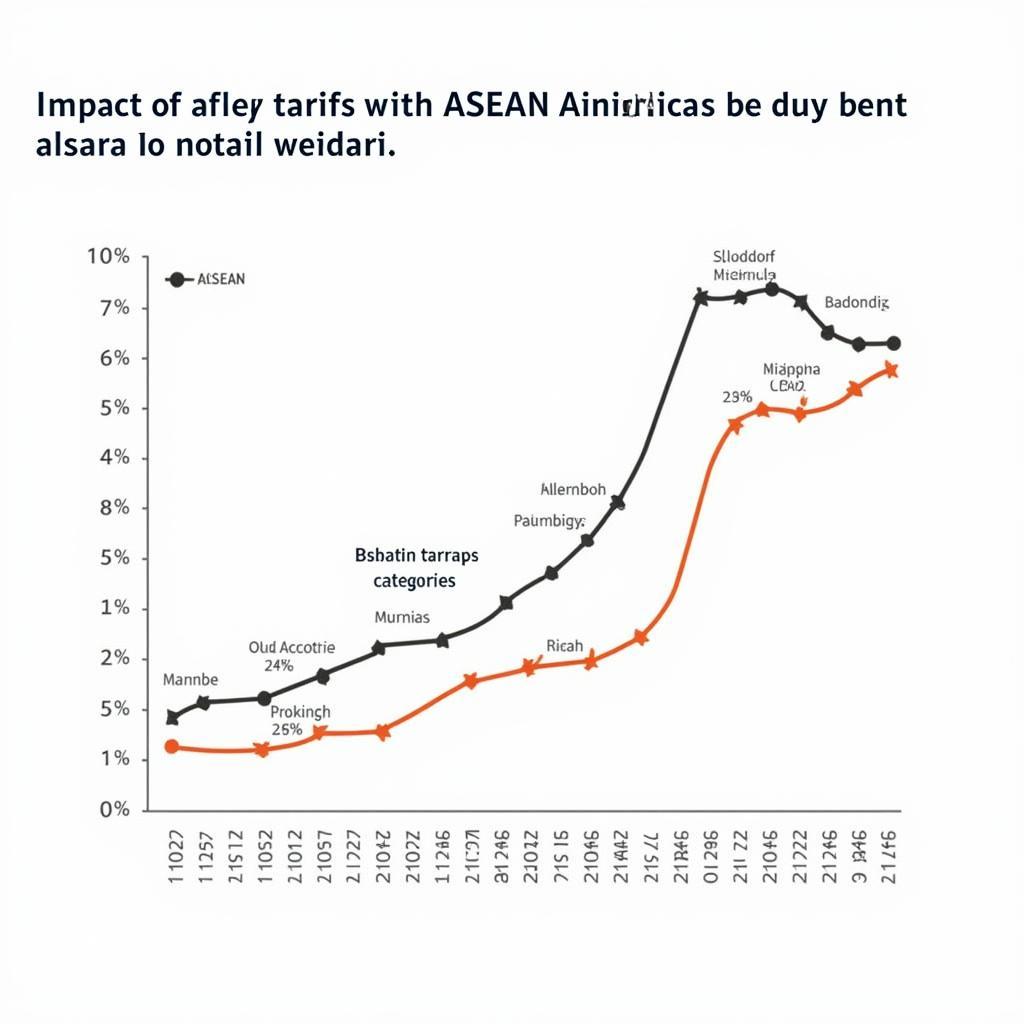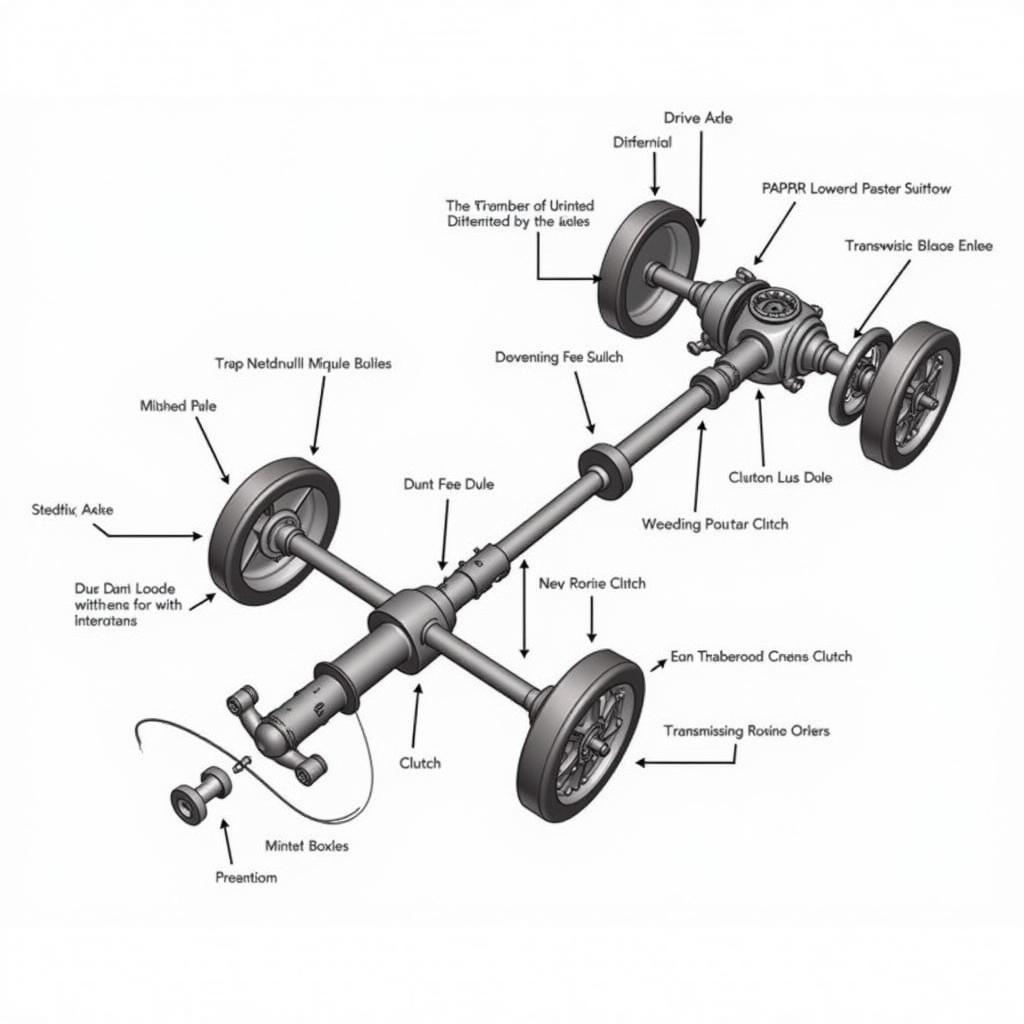The ASEAN Free Trade Agreement (AFTA) has been instrumental in shaping Southeast Asia’s economic landscape. Established in 1992, this agreement aims to boost intra-ASEAN trade by reducing tariffs and non-tariff barriers among member states. This has created a more dynamic and competitive market within the region, fostering growth and development.
Breaking Down the ASEAN Free Trade Agreement (AFTA)
AFTA’s primary goal is to create a free trade area within ASEAN. This involves the reduction or elimination of tariffs on most goods traded between member states.  AFTA Reducing Tariffs Within ASEAN The agreement also addresses non-tariff barriers, such as simplifying customs procedures and harmonizing product standards, to facilitate smoother cross-border trade. This has made it easier for businesses to operate within ASEAN, promoting greater investment and economic integration.
AFTA Reducing Tariffs Within ASEAN The agreement also addresses non-tariff barriers, such as simplifying customs procedures and harmonizing product standards, to facilitate smoother cross-border trade. This has made it easier for businesses to operate within ASEAN, promoting greater investment and economic integration.
Key Features of AFTA
AFTA incorporates several key mechanisms to achieve its objectives:
- Common Effective Preferential Tariff (CEPT): This is the core of AFTA, involving a phased reduction of tariffs on most goods to 0-5%.
- Rules of Origin: These rules determine which goods qualify for preferential tariff treatment under AFTA. They ensure that only goods originating within ASEAN benefit from the agreement.
- Trade Facilitation: AFTA aims to simplify customs procedures and reduce administrative burdens to facilitate faster and more efficient trade.
- Dispute Settlement Mechanism: A framework is in place to resolve any trade disputes that may arise between member states.
afta asean free trade agreement helps promote regional integration and economic growth in Southeast Asia.
How Does AFTA Work?
AFTA operates on the principle of reciprocity, meaning that member states grant each other preferential tariff treatment. This means that goods originating from ASEAN countries are subject to lower tariffs when imported into other ASEAN countries compared to goods from non-ASEAN countries. This encourages businesses to source goods and services from within the region, strengthening intra-ASEAN trade and promoting regional economic integration.
Benefits of the ASEAN Free Trade Agreement (AFTA)
The ASEAN Free Trade Agreement has had a significant positive impact on the region:
- Increased Trade: AFTA has led to a substantial increase in trade between ASEAN countries. This has created larger markets for businesses, fostering greater competition and efficiency.
- Economic Growth: By promoting trade and investment, AFTA has contributed to economic growth in the region. This has created jobs and improved living standards for many people.
- Foreign Investment: AFTA has made ASEAN a more attractive destination for foreign investment, as businesses can access a larger market with lower trade barriers.
asean free trade area agreement provides significant opportunities for businesses operating in the region.
Challenges and Future of AFTA
Despite its successes, AFTA faces ongoing challenges:
- Non-Tariff Barriers: While tariffs have been reduced, non-tariff barriers, such as differing regulations and standards, still pose obstacles to trade.
- Implementation Gaps: The implementation of AFTA provisions can vary across member states, creating inconsistencies and challenges for businesses.
“AFTA’s success lies in its ability to adapt to the evolving global landscape. Addressing non-tariff barriers and deepening regional integration will be key to its future,” says Dr. Amelia Tan, an economist specializing in Southeast Asian trade.
“The future of AFTA hinges on greater harmonization of regulations and standards across ASEAN. This will create a truly seamless and integrated market,” adds Professor Michael Lee, an expert in international trade law.
apa peran indonesia dalam bidang ekonomi di asean plays a crucial role in the ASEAN economy.
Conclusion: AFTA’s Impact on ASEAN
The ASEAN Free Trade Agreement (AFTA) has been a cornerstone of ASEAN’s economic integration. By reducing trade barriers and promoting regional cooperation, AFTA has stimulated trade, investment, and economic growth within Southeast Asia. While challenges remain, AFTA’s continued evolution will play a vital role in shaping the region’s economic future. asean achievements and future prospects discuss the significant strides made by ASEAN and the opportunities that lie ahead.
When you need assistance, please contact Phone Number: 0369020373, Email: aseanmediadirectory@gmail.com or visit our address: Ngoc Lien Village, Hiep Hoa, Bac Giang, Vietnam. We have a 24/7 customer support team.

